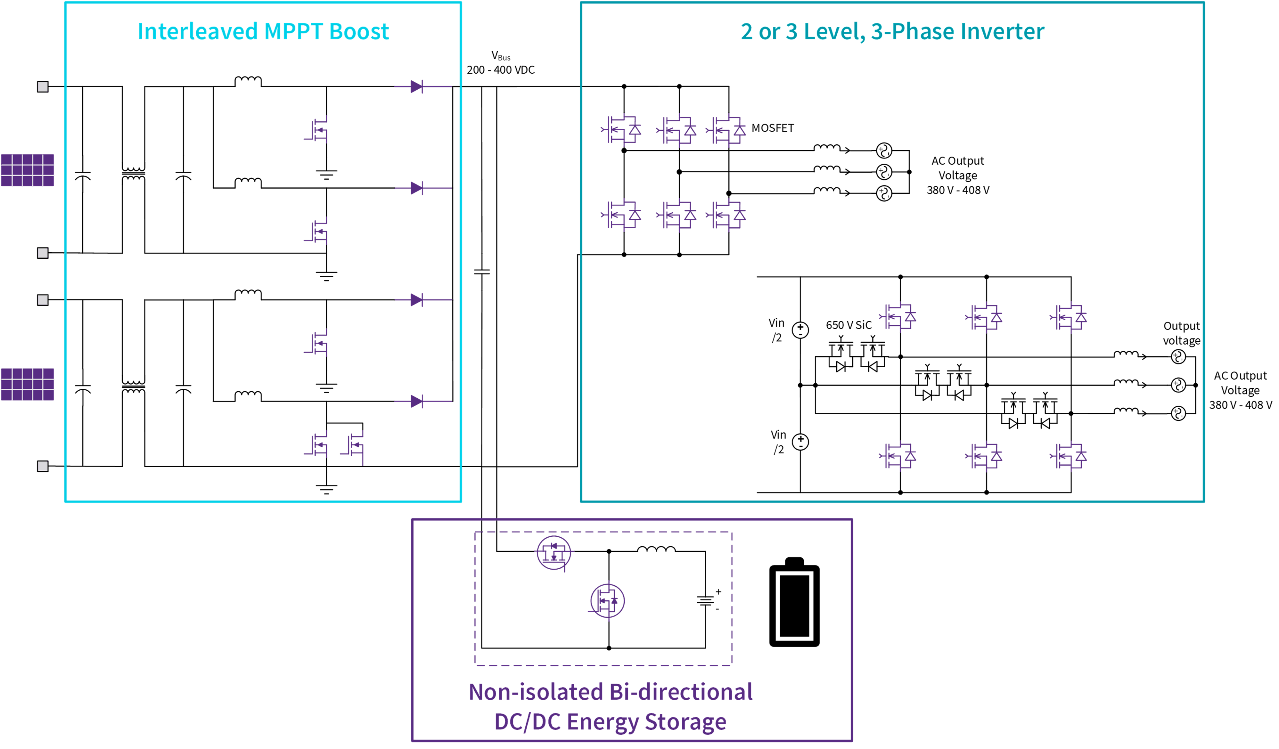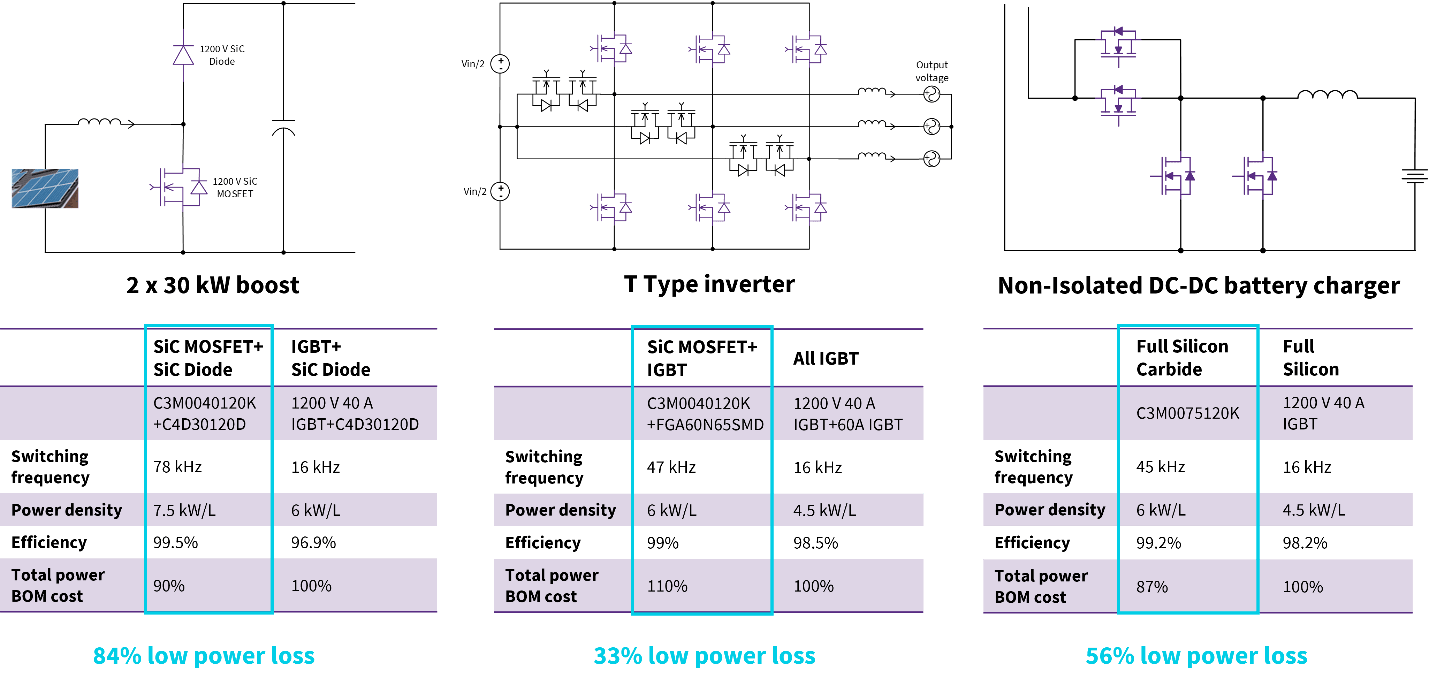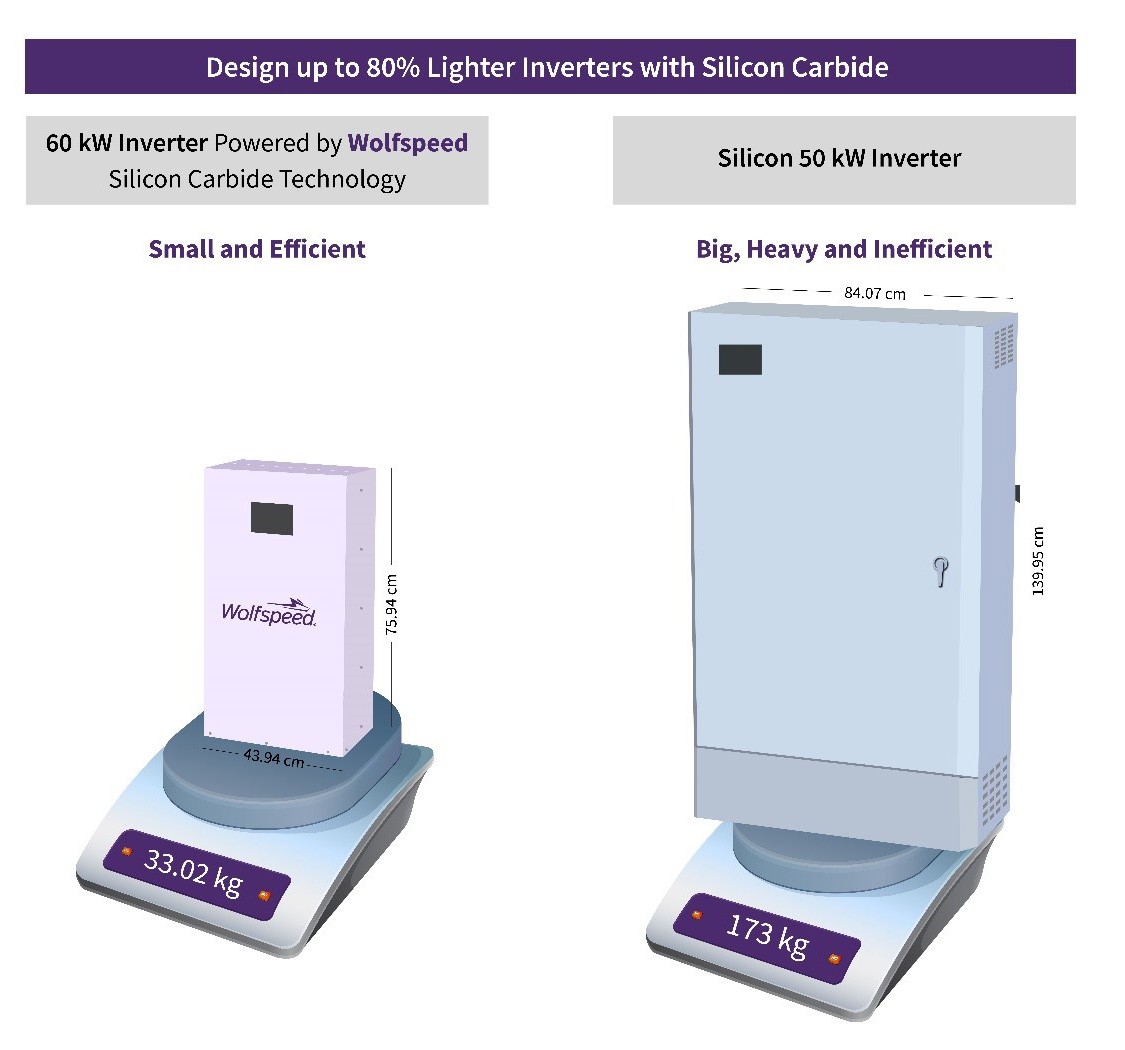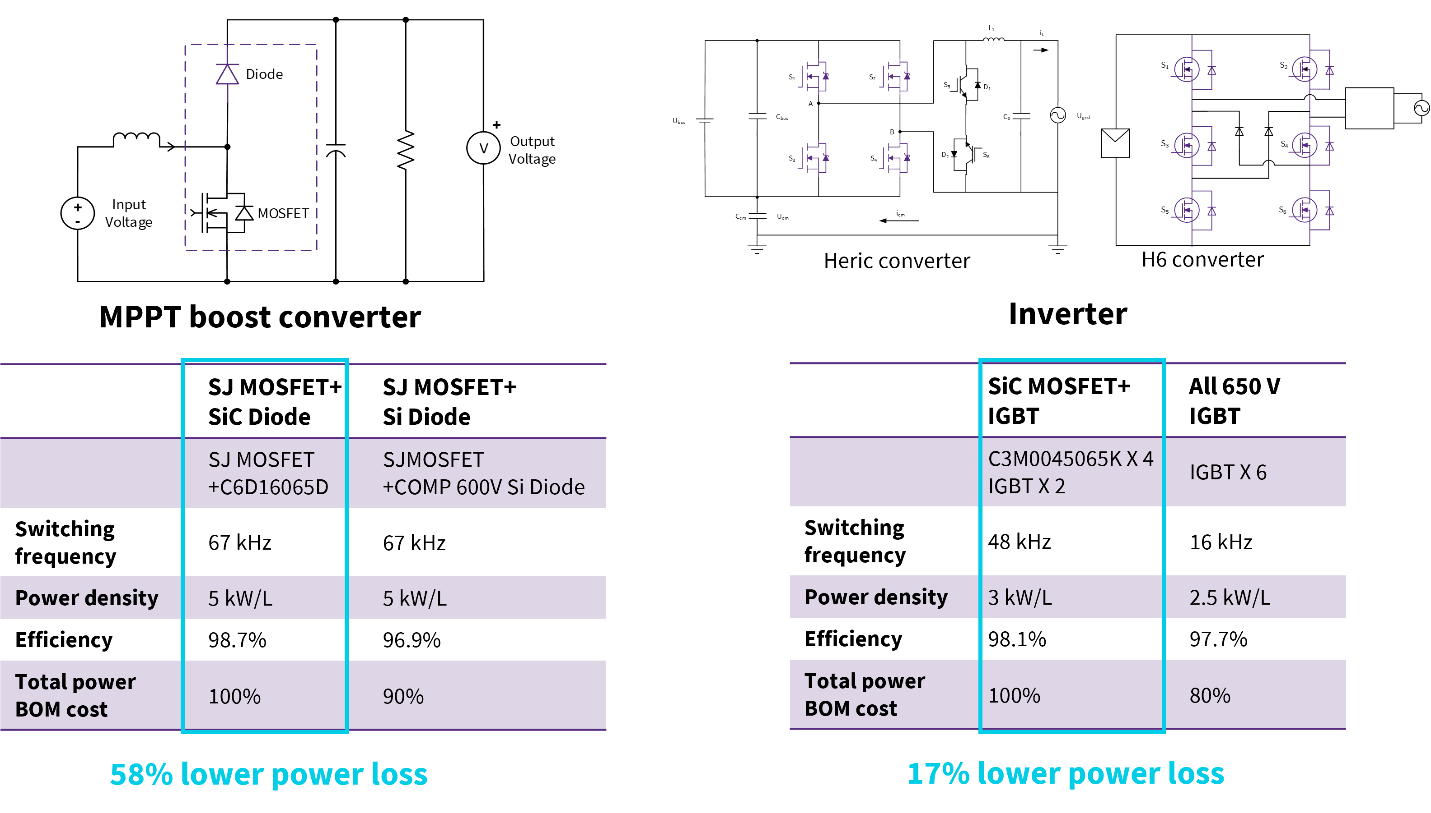Wolfspeed SiC Transforms Solar Energy Infrastructure
Article
Across the world, societies are increasingly opting for renewable energy sources where available. Consumers and businesses, large and small, view solar energy as a viable, clean, and convenient energy source. Solar energy harvesting using photovoltaic panels offers a scalable renewable approach, whether for a compact roof-top home installation or above a commercial office.
The importance of highly efficient power conversion
Harvesting the sun's energy and inverting it to the standard AC grid voltage involves multiple stages, each incurring some losses. Energy conversion losses manifest themselves in different ways, such as waste heat and a voltage reduction, but collectively lead to conversion inefficiency; you get less out than you put in.
Designing an efficient energy conversion architecture is paramount. Reducing losses requires a close understanding of where they occur, including I2R conductor losses, semiconductor conduction losses, and those occurring in associated passive components. Heat is typically the result of an energy loss and requires dissipation, using heatsinks or forced-air cooling, which adds additional weight, cost and enlarges the overall footprint. Additionally, operating electronic components at elevated temperatures lowers the system's reliability, leading to expensive downtime and potential revenue loss.
Silicon-based semiconductors have dominated from the start, but the need for more compact, efficient, and lower-cost power conversion has driven research into new semiconductor technologies. Compared to silicon, wide-bandgap materials such as silicon carbide (SiC) operate at higher switching frequencies and higher voltages and have a wider operating temperature range, resulting in smaller, more compact designs and higher system-level power density.
Solar inverter use case comparison
Silicon-based insulated-gate bipolar transistors (IGBTs) have historically been employed as high-power switching transistors inside inverters used in solar and energy storage systems. However, Wolfspeed’s 650 V and 1200 V SiC MOSFETs and associated SiC diodes, deliver significant advantages, including a 70% reduction in system losses, an 80% weight reduction (for a 60 kW inverter), and up to a 15% reduction in system cost. In addition, Wolfspeed’s SiC MOSFETs have industry leading Rds(on) characteristics against temperature and have a 30% less peak reverse recovery current compared to silicon counterparts.
Figure 1 illustrates the high-level architecture of a 60 kW solar inverter and energy storage system. Three functional stages require switching semiconductors: an 800 Vout MPPT Boost, a 400 VAC 3-phase inverter, and the 400 V battery charger/energy storage system (ESS). Compared to IGBTs, a Wolfspeed SiC MOSFET and SiC diode combined approach yields a 3% improvement in overall system efficiency, representing a 70% reduction in system losses.

Figure 2 details the gains in efficiency, power density, and power loss reductions at each stage. In the example, the Wolfspeed SiC MOSFET runs at 45 kHz, compared to the IGBT's 16 kHz.

Wolfspeed's SiC MOSFETs, such as the C3M0040120K 1200 V device used in the 30 kW boost section in Figure 2, can operate at much higher switching frequencies than IGBTs, allowing the use of smaller inductors and capacitive components, further contributing to reducing the inverter's footprint. Complementing the SiC MOSFETs, Wolfspeed’s SiC diodes, such as the C4D30120H, a 1200 V Schottky diode, deliver an efficient paired combination. Inverters designed using Wolfspeed's SiC MOSFET and SiC diodes are up to 80% lighter than IGBT-based units. For example, a 60 kW IGBT inverter weighs 173 kg (380.6 pounds), compared to 33 kg (72.6 pounds) for a Wolfspeed silicon carbide-based inverter. This weight reduction offers a significant advantage during fitting since a crane and multiple personnel would be required to install an IGBT system. Given the weight reduction, fewer personnel are needed to install and commission a SiC inverter, the overall implementation costs are reduced, and the process is far more productive.

The benefits of using Wolfspeed's SiC MOSFETs for a three-phase 60 kW solar inverter equally apply to smaller, single-phase inverters used in residential solar installations. In the residential inverter, SiC simplifies the inverter design and with the reduced recovery loss attributes of the Wolfspeed SiC MOSFET, better than 80% less losses are achieved.
Figure 4 illustrates the maximum power point tracking (MPPT) boost converter and inverter stages of a single phase 7kW residential inverter. The boost function is a key aspect of any solar inverter design since the input voltage from panels can vary considerably during the day due to changing weather conditions. By boosting the input voltage to the inverter up to a consistent 400 V, the system can operate more efficiently, and the inverter will deliver a reliable 220 VAC output. The Heric topology inverter uses four Wolfspeed C3M0045065K 650 V SiC MOSFETs, to reduce losses compared to using IGBT devices by 17 %. The boost function uses Wolfspeed C6D16065D 650 V SiC Schottky diodes. Compared to other silicon diodes, the Wolfspeed diode exhibits a zero reverse-recovery change, permitting ultra-fast switching operations, has the lowest forward voltage drop over temperature characteristic, and has a temperature-independent switching behavior.

To speed the development of a single-phase solar inverter, Wolfspeed provides a 60 kW boost converter reference design. The CRD-60DD12N reference design includes the schematic, PCB layout and BOM, and uses the Wolfspeed C3M0075120K 1200 V SiC MOSFETs and Wolfspeed C4D10120D 1200 V SiC Schottky diodes. The 60 kW design can operate at switching frequencies up to 78 kHz and operate up to 99.5% peak efficiency.
Wolfspeed SiC design resources
Start simulating your solar designs today with the Wolfspeed SpeedFit™ Design Simulator and see the benefits of using Wolfspeed silicon carbide MOSFETs and diodes. SpeedFit offers an easy-to-use online interface to quickly run simulations that predict conduction and switching losses, evaluate how performance varies with Rg, and compare different devices and thermal configurations.